Passages: Two of the Three Great Capes
Sailing around the world’s Great Capes is always a highlight for long-distance sailors. In this report Anne Pilcher shares her experiences on passage around Cape Horn and the Cape of Good Hope.
Published 6 days ago
In 2015 Anne Pilcher Gough and partner Alan Forrest, circumnavigated from NZ via the Cape of Good Hope and Cape Horn, in their 36′ steel yacht Kiwi Dream. This is an extract from Anne’s book “Ocean Freedom” about her experience rounding 2 of the great Capes.
The Everest for Sailors
After talking to a few cruising yachts about different routes (into the Pacific), we decided to go down to South America, through the Le Maire Strait, into the Beagle Channel, around Cape Horn and through the Chilean channels into the Pacific, rather than the usual route through Panama.
Knowing this trip down to Cape Horn would be one of, if not THE highlight of our circumnavigation, we wanted to share it with friends that were free enough and keen enough to come to the end of the
world, fit into a shoebox in cold, windy, and wet conditions and sail with us around the famous Cape.
John Dale, a Southland farmer and Martin Potter, a surveyor from Golden Bay, both said yes! Both men had steel yachts of there own and knew our yacht, Kiwi Dream, well. The men flew into beautiful Ushuaia, Argentina, the most southern city in the world, on New Year’s day – with Punta Arenas, some four hundred and sixty-five nautical miles away, in their sights.
Puerto Williams – Chile
Three days later, hardly over their jetlag and having helped us shop for two months’ supplies of food, we cleared out of Ushuaia, Argentina, and sailed the twenty-five miles back along the Beagle Channel to Puerto Williams, on the southern side and cleared into Chile. The procedure is to wait for a weather window, inform the Armada (Navy) Office and obtain a ‘Zarpe’ (clearance) for Cape Horn, seventy-five nautical miles away.
Puerto Williams is such a special place. The Dientes de Navarino (Teeth of Navarino) mountains tower majestically above the anchorage where we and other yachts tied beside the Micalvi, an old
ship, decommissioned in 1961, and now used as a mooring! It has a wonderful bar in it – the “Yacht Club at the End of the World”. Semi-wild horses roamed the streets’ and we found the bow of the Yelco, the
ship which rescued Shackleton’s 22 men from Elephant Island, now a memorial to Chile’s captain Luis Pardon, and the 22 men that were stuck there in 1916 for four and a half months, when their ship the
Endurance was crushed in the ice in Antarctica the previous year.
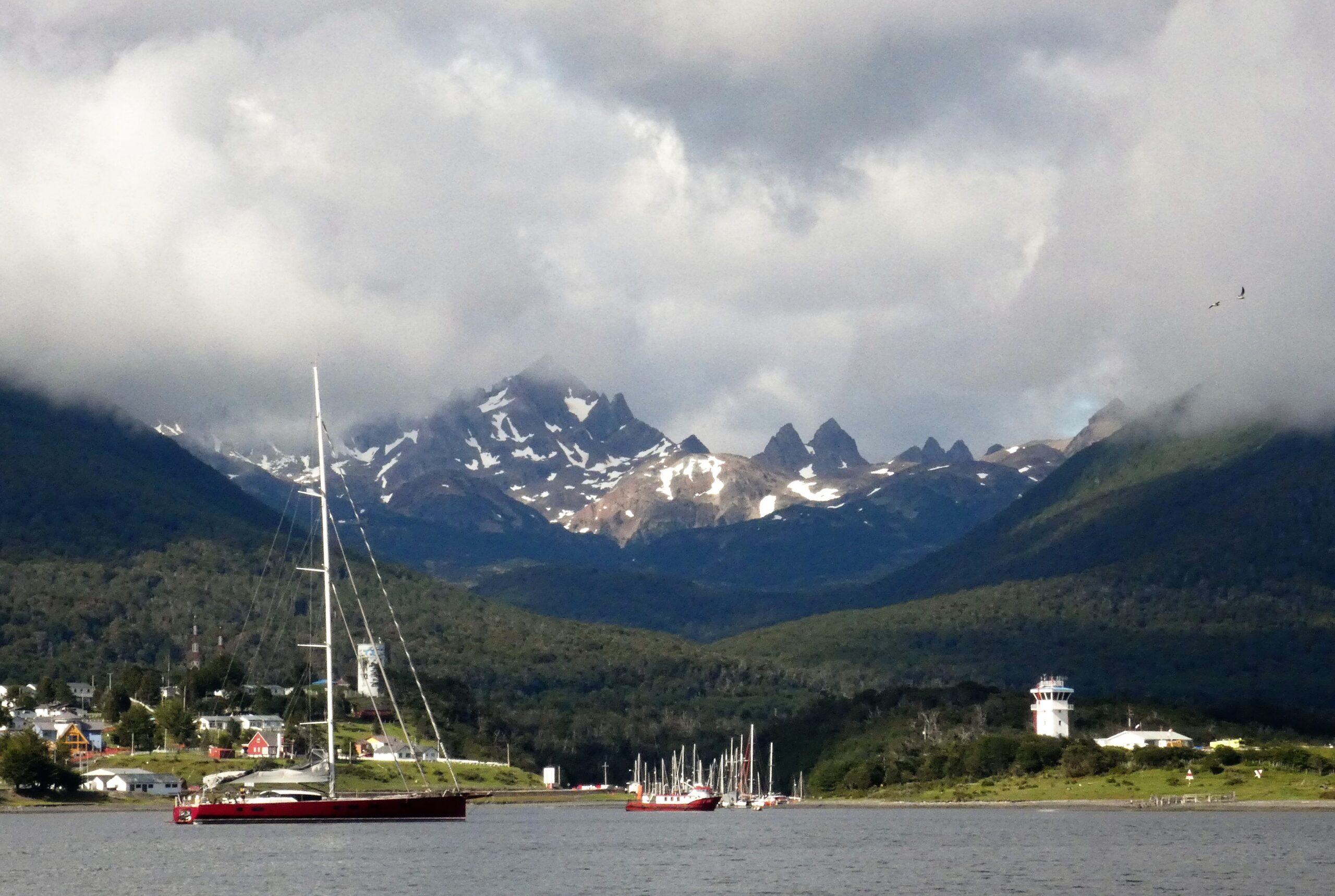

Around the Horn
After spending the first night at Caleta Martial (only 10 nm from Cape Horn) we sailed in glorious weather to Cape Horn. I stayed on Kiwi Dream motoring around, as it was too deep to anchor off the steps up to the Lighthouse. The boys went ashore and had tea with the lighthouse keeper’s wife Natalie! Lovely people. They were staying a year with their family of three children, manning the light and the radio, welcoming visitors. There is a beautiful sculpture of an albatross on the western side of the island, a memorial for all the lost sailors over the years.
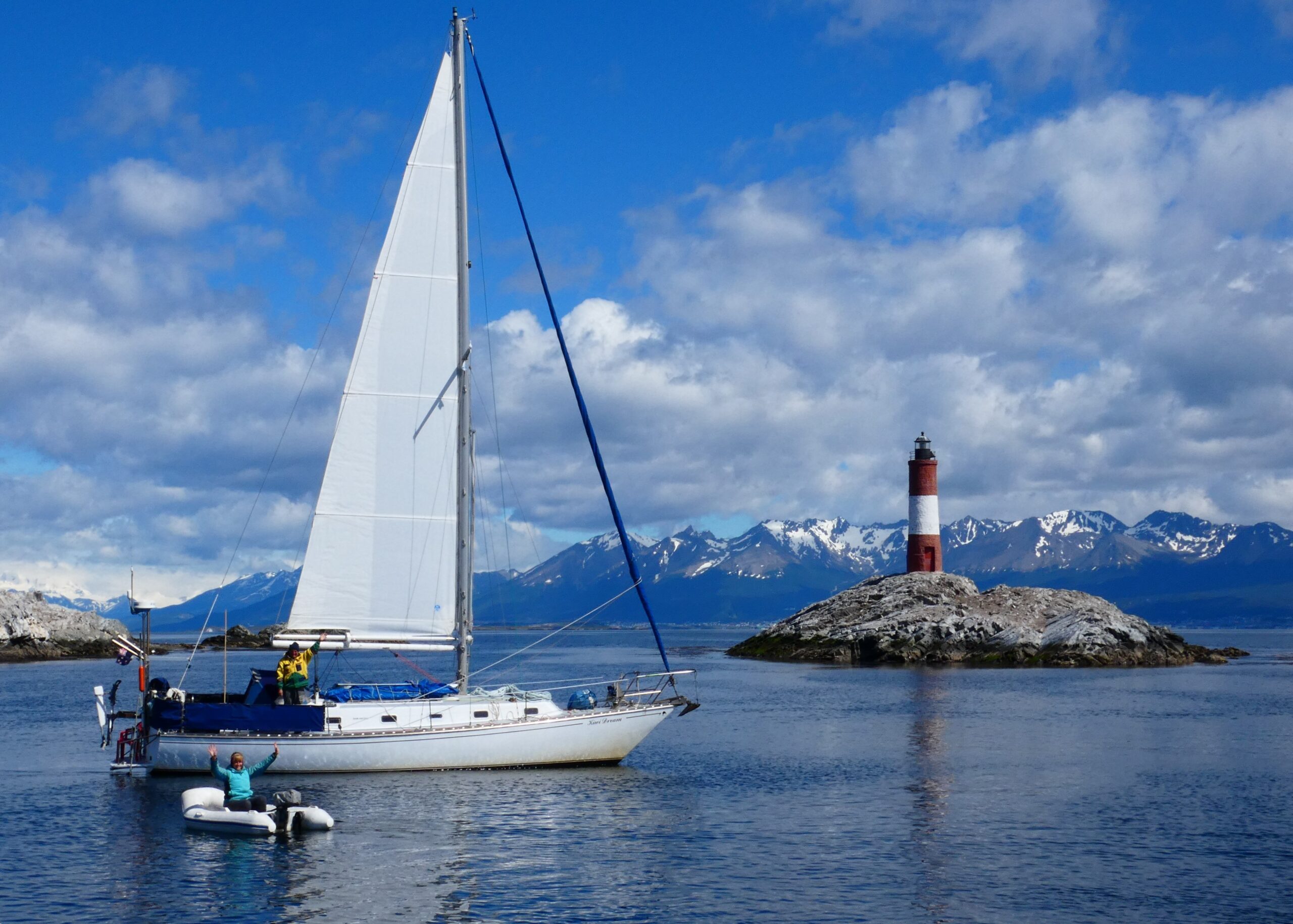

I had visited Cape Horn when working on Australis in 2009, a 75’ steel Ganley yacht that worked in Antarctica. I had first written in the visitor’s book then, dedicating my thanks to my paternal grandfather, Elias Tomlin Pilcher, Master Mariner, who had navigated these waters many times under sail and steam, captaining several ships from the E & A (East and Australia Line) in the early 1900’s. It was Grandad who sowed the seed for my sailing life and partly why I was here now, for a lucky second time, with my partner Alan.
The weather was good and we were off, sailing ‘Round the Horn’. In reality this involved circumnavigating the island, not a TRUE rounding from west to east or east to west. The weather was perfect and I got into the dinghy with its 2 horse power outboard “Pam” and took photos from the Drake Passage, of Kiwi Dream sailing in front of Cape Horn!
Anchoring safely in Puerto Maxwell that afternoon, the celebrations went on well into the night. I doubt if any of us will get this chance again.
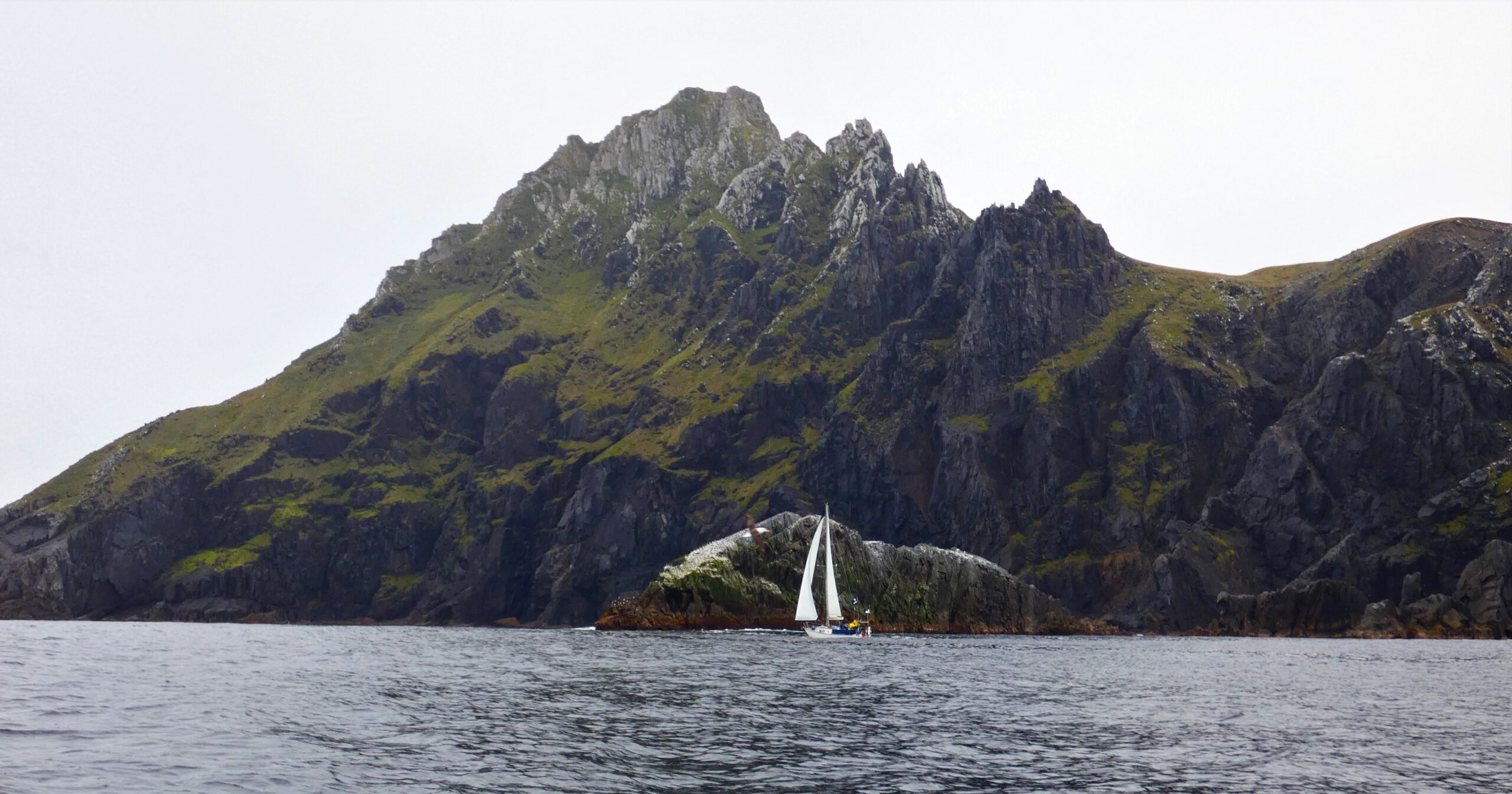

On to Puerto Toro
Next day a cold front blew up from the south then south-west as we navigated the 50 nm back to Puerto Toro. The wind went from 20 to 30 knots gusting 40 plus! We were in the shelter of the islands but still felt the force of the winds. Our windvane steered while Martin and Alan took a stint outside in the cockpit with their goggles on, to see through the driving rain. John and I were down below when a larger than normal wave forced its way through the overhead hatch – which was screwed down tight – and poured down over the navigation instruments on the chart table. One of the pot hatches blew open at the same time, and emptied itself across the cabin. We were so glad that we were not out in the Drake Passage sailing around the Horn now!
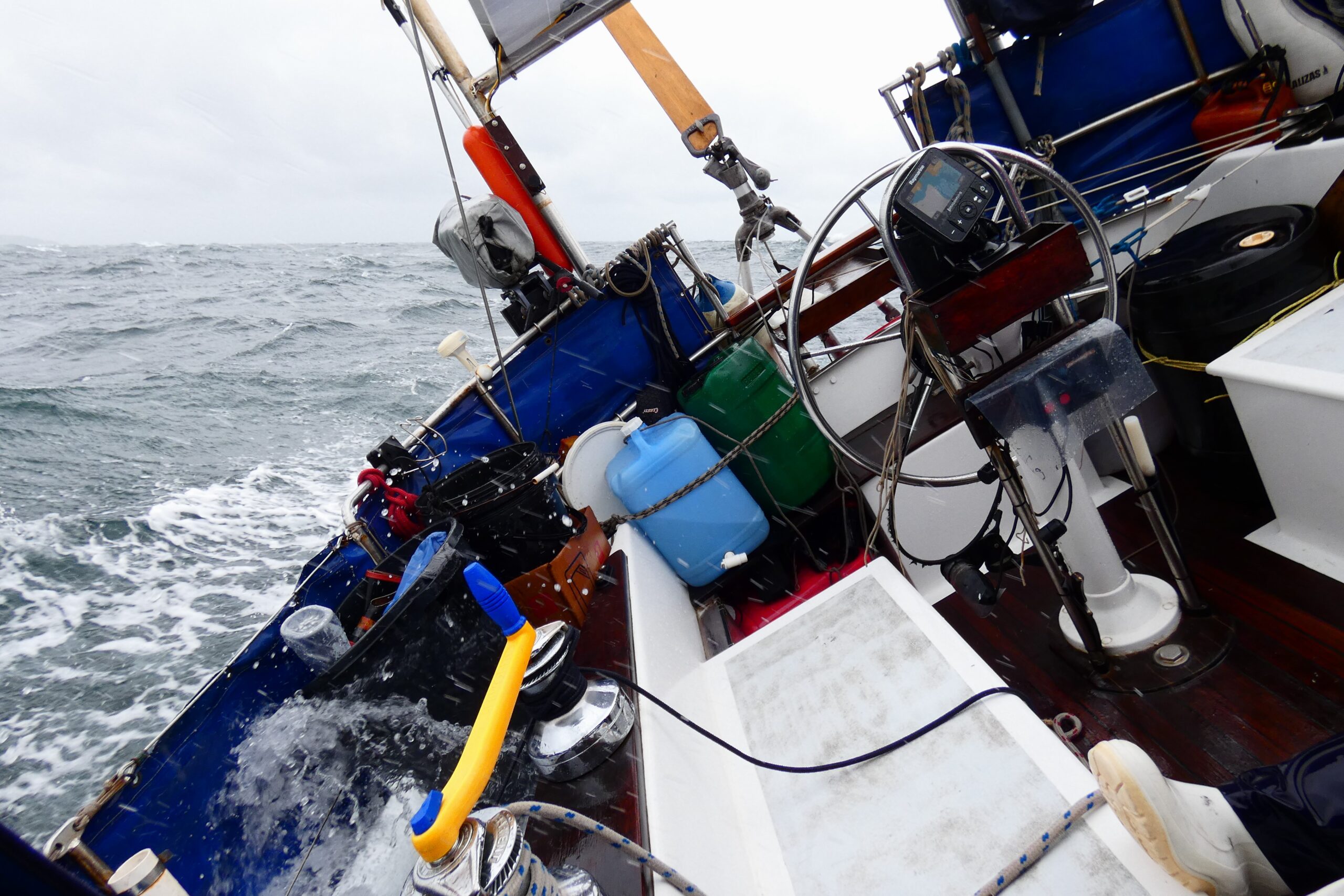

The Cape of Storms
Originally, the Cape of Good Hope was called the ‘Cape of Storms’ by Portuguese explorer Bartholomeu Dias in the 1480’s. However, as that didn’t entice explorers to round it and look for the spice route, the name was changed. This was to be my third rounding of the Cape, and Alan’s first.
I first rounded the Cape of Good Hope in 1973/4 as a newlywed with my Australian husband John Roxburgh and his parents in their 45’ wooden yacht Phylis Graham. In those days, we navigated with a sextant, RDA (Radio Direction Finder) and depth sounder only. We also towed a walkers log. The weather forecasting was also not nearly as accurate back then (mostly by barometer).
My second rounding was with my Scottish husband, Thomas Gough, in his 40’ wooden yacht Hinerangi in 1983/84.
My third time, in 2018-19, was interesting to compare with the others. We now had AIS, GPS, and very good forecasting. Also, Des (a local weather guru) was helping us find the ideal weather window, along with our very good Predict Wind electronic charts.
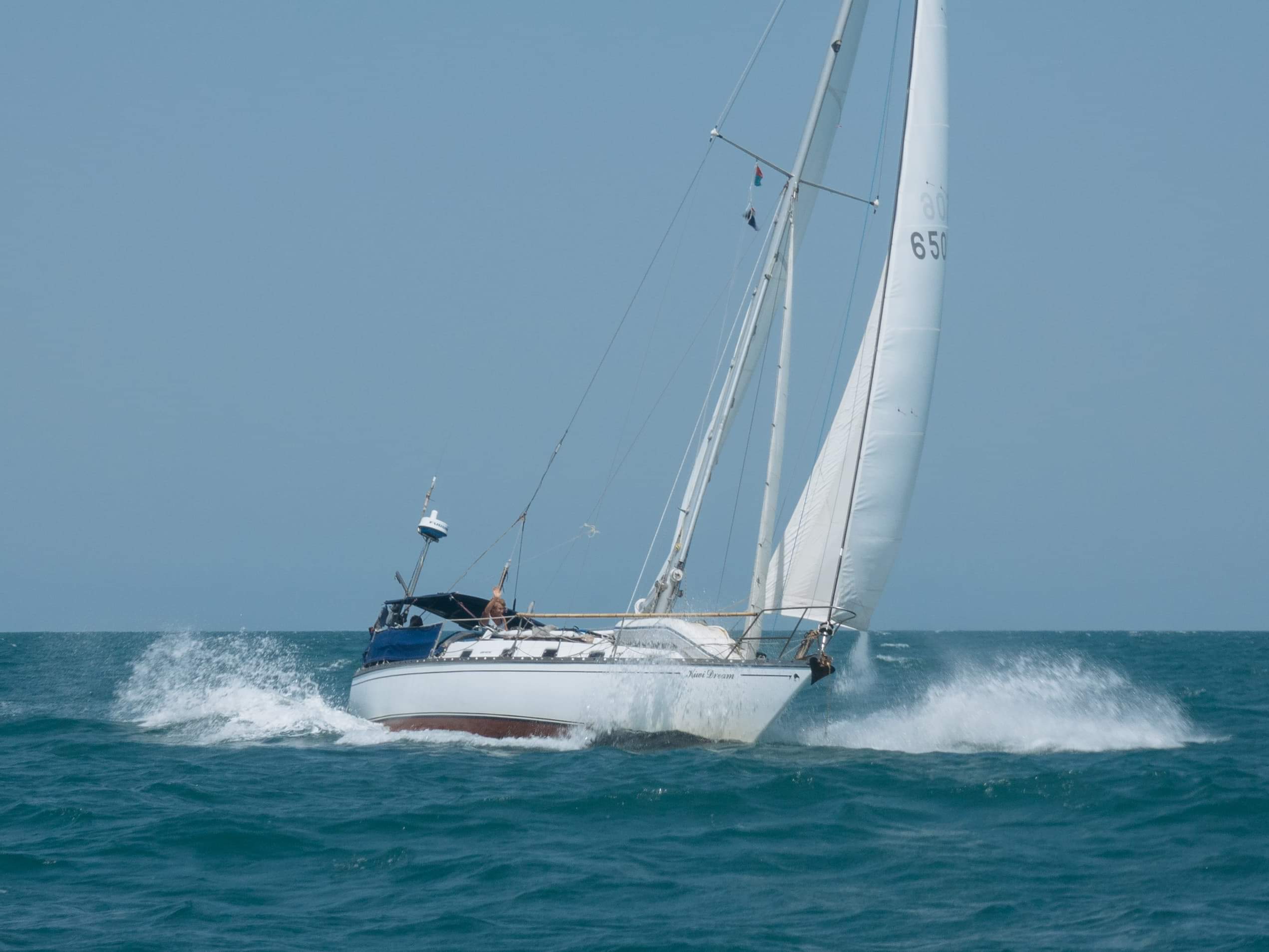

The principle for rounding the Cape of Good Hope is always the same. You do NOT want to get wind against the Agulhas current, which runs in a southerly direction down from the Mozambique channel to Cape Town. You wait for a favourable north or north-easterly weather window. You can usually get an accurate weather forecasting for at least three days and that is enough to coast hop to Cape Town, via Durban, Port Elizabeth, Mossel Bay and Knysna, all possible stops. Even so, I kept a close eye on the barometer for any rapid drop in pressure showing a depression was coming.
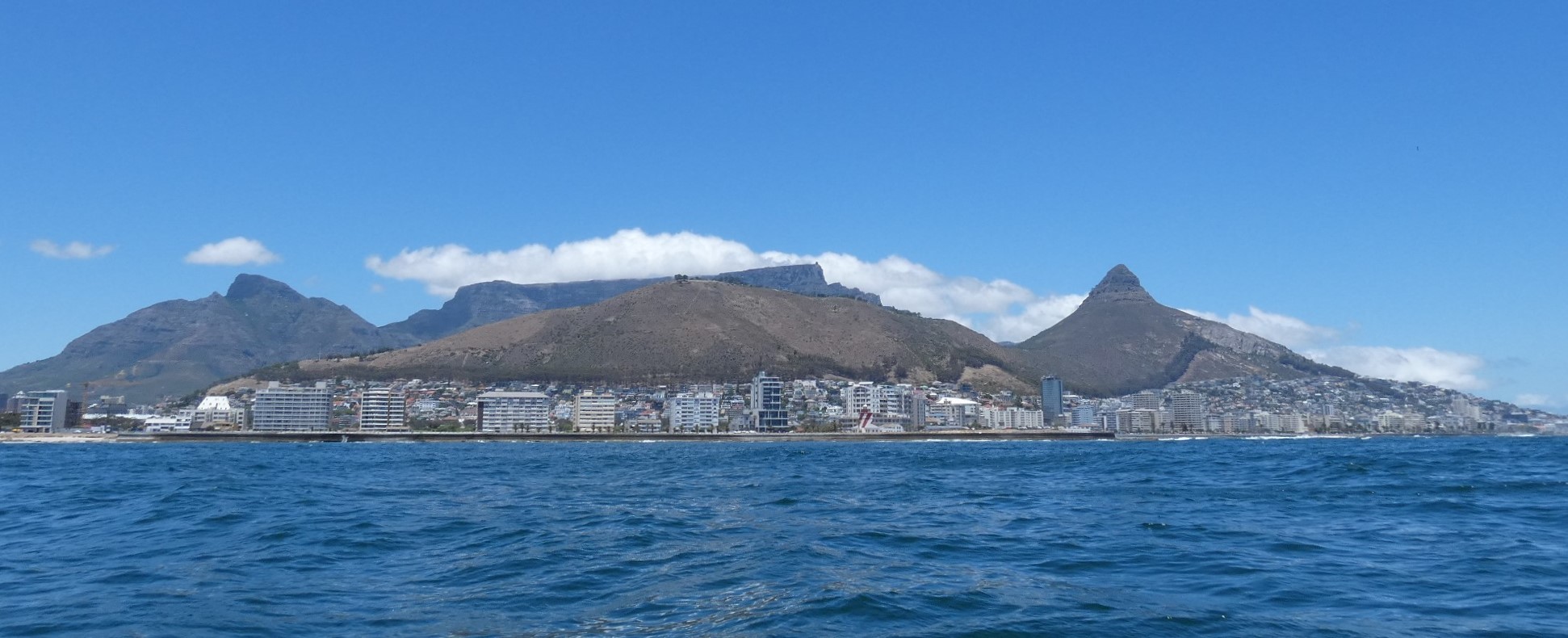

The other very important rule, is to keep either inside, or well outside, of the continental shelf, but never ON it. You can see on the chart that the continental shelf is only a few miles off the land, especially in between Durban and Port Elizabeth. It drops from under one hundred meters to over one thousand meters outside the shelf. IF caught on the edge of the shelf when a storm from the south blows against the five knot south flowing Agulhas Current, it can cause “freak waves” of enormous size and can break ships in half! I remember seeing this printed on a chart in 1973…“Beware Freak waves that can break ships in two”! It sounds very scary, but once you know why you can be careful to avoid it.
Anne Pilcher Gough
……………………………
About the Author
In 2015, Anne and her partner Alan Forrest, left Riverton at the very south of New Zealand to circumnavigate the world in their 36’ steel yacht Kiwi Dream. After visiting 28 countries in five years, they were stopped in the Patagonian Chilean Channels by Covid-19, spending three winter months in Valdivia, Chile, in lockdown. Eventually, they returned to Opua in New Zealand, via Gambier (French Polynesia) in October 2020 and back to Riverton by 2021.
Anne wrote a travel and adventure book called Ocean Freedom about some of the highlights of their circumnavigation, including 33,000 sea miles, hitting two whales, surviving a rat infestation, wearing out two sets of sails, and choosing a lesser-travelled route via Cape Horn. Woven through the book are other encounters from Anne’s forty years of sailing, ocean racing, yacht deliveries and additional 100,000+ sea miles.
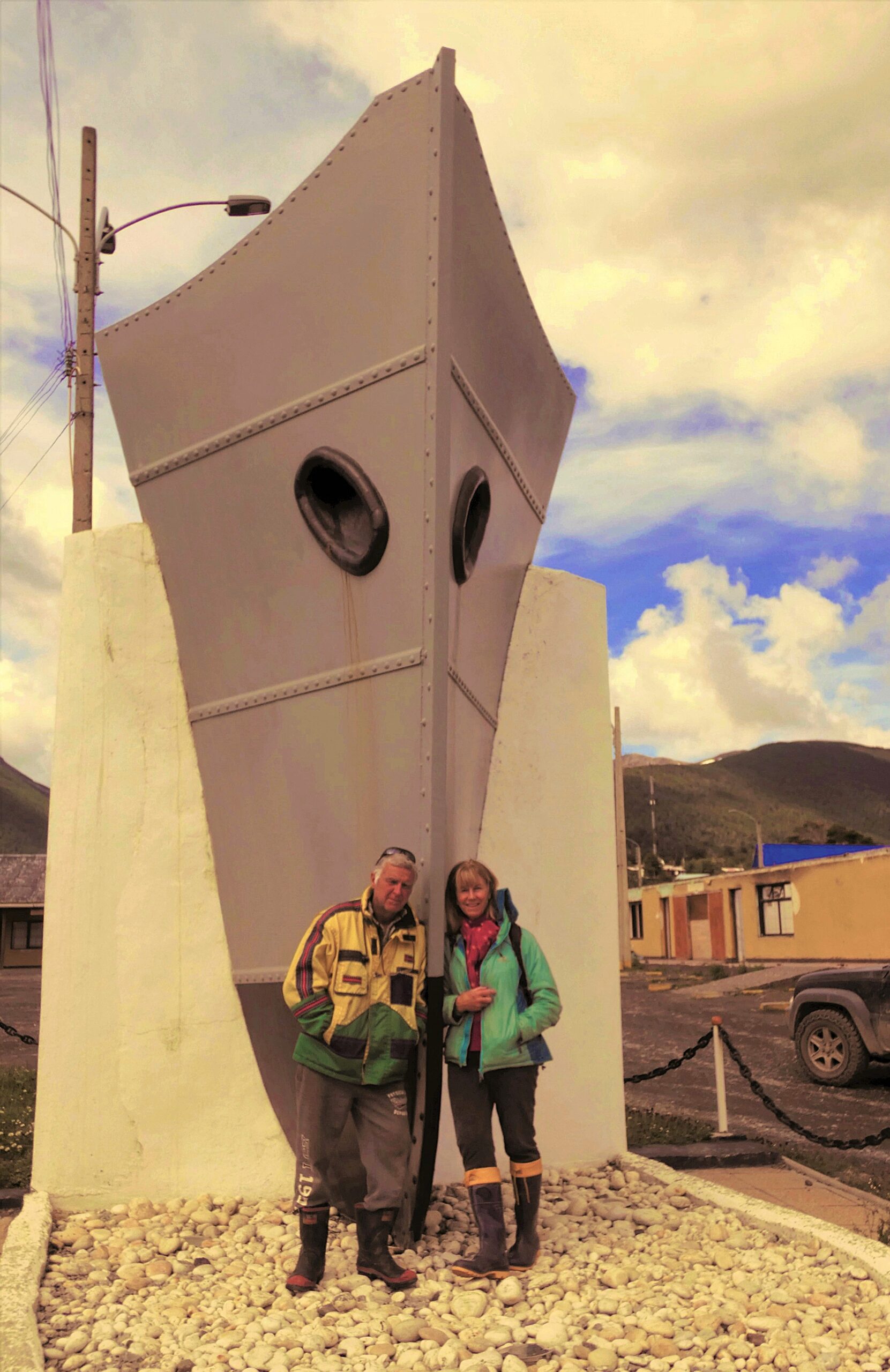

…………………………….
© 2025 Noonsite. This content was edited by Noonsite. Do not reproduce without permission. All rights reserved.
The opinions expressed in this article are the author’s own and do not reflect the view of Noonsite.com or World Cruising Club.
If you have found this information useful, become a paid member to enjoy unlimited use of Noonsite plus many other perks. Your membership fees really help our small, dedicated team keep country information up-to-date in support of cruisers worldwide. Find out more about Noonsite Membership levels and benefits here.
Subscribe to our FREE monthly newsletter: https://www.noonsite.com/newsletter/
Related to the following Cruising Resources: Books, Circumnavigation, Circumnavigation, Circumnavigation, Insights, Routing

